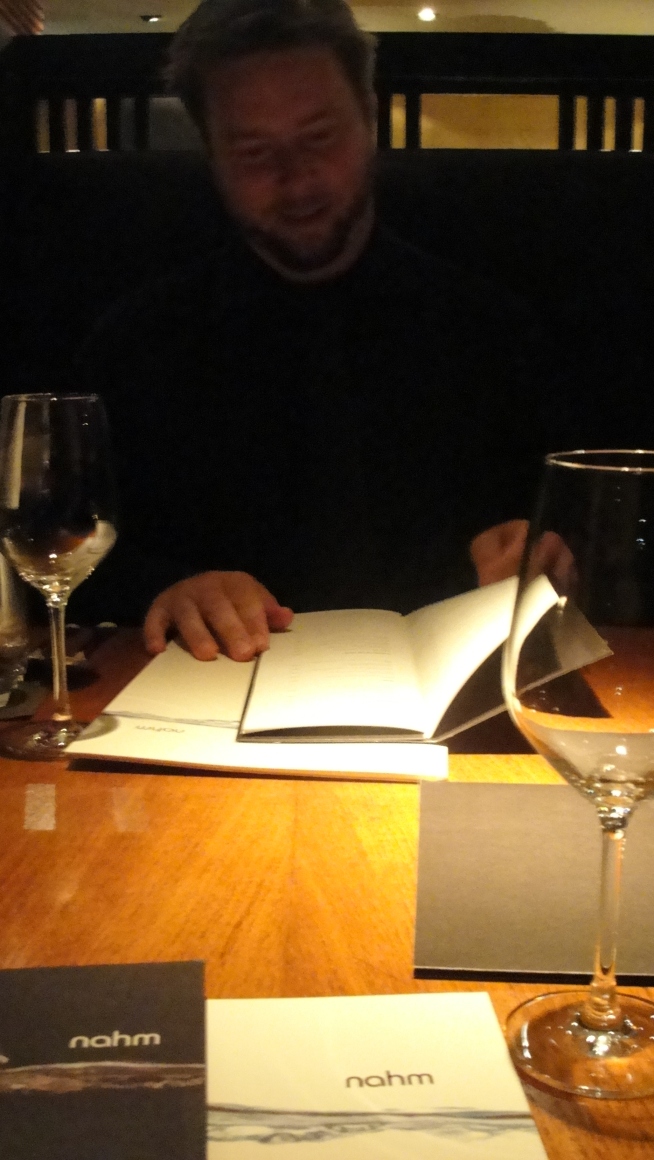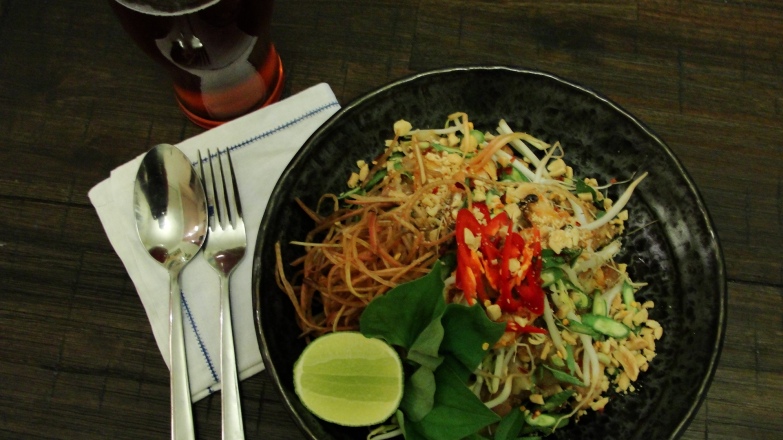
Noisy, crowded, sweaty nights markets, drinking cold Singahs in makeshift bars at plastic tables, the occasional bouts of crippling diarrhoea; oh! how I still dream of the mean streets of Bangkok. The city never sleeps, always eats and the roads are paved with incredible (if sometimes dangerous) mouthfuls of exotic excellence. I have hovered tentatively over the squat toilets in this south east asian culinary mecca four times now, and yet find myself only barely scratching the surface of one of the richest and most ancient food cultures on this fine earth. Siam, Thailand is the only country in South East Asia that has never been colonized, or conquered. And while neighbouring cuisines have lent a myriad of influences to their food, the cultural identity of Thailand’s food is distinct, unmistakable and iconic.

Every unwashed, beaded, sandal wearing, free loving tourist wandering down Khao San road with a Singah in one hand and a few spare Baht in the other has pushed their way through the incessant hoards of almost confrontational hawkers and tuk tuk drivers, avoided being run down by gangs of scooter riding locals who can appear from anywhere (the footpath is not even safe!), and found themselves with a paper plate of cheap delights, a Pad Thai from one of the many street side vendors peddling their amazing wares well into the hot Bangkok night. Surprisingly though this quintessential street food classic is a relatively recent addition to the Thai repertoire. In the late 1930s-1940s, during a period of ultra nationalism while the country was under the military regime of Marshal Phibun, the government declared that the Thai people should incorporate noodles into their diet. As Thailand’s main export at the time was rice, the powers that be (were) hoped that by introducing noodles into the peoples diet it would free up more premium rice for profitable export. Thus began a nation wide competition held in schools and government offices to concoct new noodle dishes. The winning recipe, containing Tamarind and Palm Sugar, was named Pad Thai.
During one of our recent trips to Bangkok we were lucky enough to book a table at Australian born Thai food guru, David Thompson’s restaurant Nahm, mere weeks before it hit the number 13 slot in the auspicious San Pellegrino worlds top 100 restaurants list, and was subsequently booked out for many months following. I still remember the “what the fuck?” look on the face of the doorman at the lavish Metropolitan Hotel as we rolled up in a grubby tuk tuk and out we stepped slightly frazzled but dressed in our finest. This dinner was the long awaited fruit borne of a seed of inspiration planted long ago by my girlfriend (and editor) who after our first trip to Thailand, bought me a copy of Chef Thompson’s cook book Thai Street Food. After years of pouring through the pages of this vast tome of knowledge for inspiration, the meal we were treated to at Nahm was at once unusual and sublime (right down the the very well polished and professional lady-boy who served us).

(A full review of our dinner at Nahm is on my travel blog The Plate Escape)
I won’t lay claim to this recipe. I have lent a certain amount of poetic license to my adaption (as in I have bastardised it slightly) but the truth is that I have lifted the core concept of this dish straight from the pages of my trusty volume of that old Christmas present. A gift that sparked a fervent curiosity (borderline obsession) with the beautiful complexity, tongue busting spice, and ingenious balance of this amazingly vibrant food culture.

Tamarind water
Ingredients
- 300g Tamarind pulp seedless
- 300g cold water
Method
Break up the tamarind block and soak in water for 15 minutes. Break down the pulp further with your hands and soak for a further 5 minutes, then hit that mofo with a potato masher. Work it over until you have a thick pasty consistency. Pass the mix through a fine sieve and discard the solids. This sounds like a bit of work but don’t be a pussy! Trust me once you have made your own, that gunk you have bought from the super market in a jar will never be the same again.

Pad Thai Sauce
Ingredients
- 3 Tblsp shaved palm sugar
- 2 Tblsp fish sauce
- 2 Tblsp tamarind water
- 1 tsp rice wine vinegar
Method
Combine all ingredients and stir until the sugar has fully disolved.


Pad Thai
To Assemble
- 200g fresh flat rice noodles or 150g dried pad thai noodles (rice sticks)
- 200g boneless chicken thigh diced
- 5-7 banana prawns
- 3 red shallots coarsely chopped with a pinch of salt
- 2 cloves of garlic finely chopped
- 100g of firm tofu diced into 5mm dice
- 2 leaves of a banana blossom finely sliced
- 1 handful of mung bean sprouts
- ¼ cup of roasted peanuts
- 2 eggs
- 3 snake beans finely sliced
- 1 red chilli finely sliced
- 1 lime
- 1 sprig of Thai Basil
- 3-4 leaves of asian pennywort or vietnamese fish mint (yes, fish mint!)
This dish is knocked out in 2 minutes flat on the side of the road in Bangkok. It is a fast dish to cook so have all your ingredients sliced and ready to go before you heat your pan. Peel the shells off the prawns tails but keep the heads on. If using dried noodles, soak for 15 minutes in water and then blanch to avoid sticking together in the wok. In this recipe I have elected to use wide, flat rice noodles, while not very traditional I like the texture and they seem to hold the sauce better than thinner noodles. Fresh noodles will be fine to biff straight in as you don’t want the noodles to be to soft as they will disintegrate during frying. Using scissors take the prawns and snip off the gross little legs bits and the nasty head spike, then run a sharp blade along the back of the tails length ways and remove the poop shute. Heat a pan and sear off your prawns. Trim all the dry edges off the banana blossom leaves and then slice on an angle and then soak in ice water with a squirt of lime for 10 minutes. Roughly crush the peanuts in a mortar and pestle.
Finally folks, its wok time!!! Heat 2 Tblsp of oil until its smoking hot, season your diced chicken and sear in the hot oil. Brown the chicken and then lower the heat and cook most of the way through. Remove the meat from the wok but reserve the fat (mmmmmm delicious, delcious chicken fat). Heat the wok until smoking again and dump your shallots and garlic in and sautee at a high heat. Once shallots have started to colour sightly crack your eggs into the wok and mix into veggies. Drop your noodles and tofu into the mix and then add your Pad Thai sauce. Cook until all the sauce is absorbed and then add your chicken back in.

Serve immediately and garnish with prawns, mung bean sporuts, Thai basil, pennywort, chilli, snake beans, banana blossom, and sprinkle peanuts over the top. Cut the side off a fresh lime and squeeze over just before eating (after you have poured yourself a nice cold beer of course). Khop khun krap!!!

And if you don’t feel like making all this stuff from scratch, check out Renee G’s Cheater’s chicken noodles…


The pad thai looks appetising.
LikeLike
Thanks @roamingpersuits. It tasted pretty good too!!
LikeLike
*@roamingpursuits
LikeLike
Absolutely awesome – can’t wait to do an impression
Barry Henderson
LikeLike
Thanks! I look forward to hearing how it goes.
LikeLike